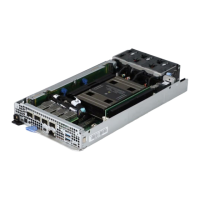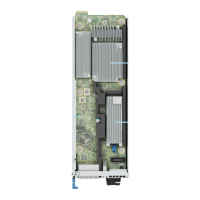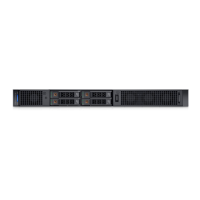System Security
To view the System Security screen, power on the system, press F2, and click System Setup Main Menu > System BIOS >
System Security.
Table 56. System Security details
Option Description
CPU AES-NI Improves the speed of applications by performing encryption and decryption by using
the Advanced Encryption Standard Instruction Set (AES-NI). This option is set to
Enabled by default.
Strong Password Status If enabled, you must set up a password that has at least one character in lowercase,
uppercase, digit, and a special character. Also, you have the option to set the minimum
number of characters in both the new passwords. If disabled, you can set a password
that has any character in it but the passwords must not have more than 32 characters.
Changes made by enabling or disabling this feature become immediately effective.
Strong Password Minimum
Length(8 to 32)
Controls the minimum number of characters used when setting a system or setup
password. You can specify 8-32 characters.
System Password Sets the system password. This option is set to Enabled by default and is read-only if
the password jumper is not installed in the system.
Setup Password Sets the setup password. This option is read-only if the password jumper is not installed
in the system.
Password Status Locks the system password. This option is set to Unlocked by default.
Table 57. TPM 2.0 security information
Option Description
TPM Security
NOTE: The TPM menu is available only when the TPM module is installed.
Enables you to control the reporting mode of the TPM. When set to Off, the presence of the TPM is
not reported to the OS. When set to On, the presence of the TPM is reported to the OS. The TPM
Security option is set to Off by default.
When TPM 2.0 is installed, the TPM Security option is set to On or Off. This option is set to Off by
default.
TPM Information Indicates the type of Trusted Platform Module, if present.
TPM Firmware Indicates the firmware version of the TPM.
TPM Hierarcy Enables, disables, or clears the storage and endorsement hierarchies. When set to Enabled, the storage
and endorsement hierarchies can be used.
When set to Disabled, the storage and endorsement hierarchies cannot be used.
When set to Clear, the storage and endorsement hierarchies are cleared of any values, and then reset
to Enabled.
TPM Advanced
Settings
Specifies TPM Advanced Settings details.
Table 58. TPM Advanced Settings
Option Description
TPM PPI Bypass
Provision
When set to Enabled, allows the Operating System to bypass Physical Presence Interface (PPI)
prompts when issuing PPI Advanced Configuration and Power Interface (ACPI) provisioning
operations.
TPM PPI Bypass
Clear
When set to Enabled, allows the Operating System to bypass Physical Presence Interface (PPI)
prompts when issuing PPI Advanced Configuration and Power Interface (ACPI) clear operations.
Pre-operating system management applications 55

